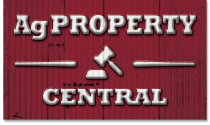
Lupins growing under irrigation on St Ronans Station. Photo: LAWD
A UNIQUE combination of wind energy, carbon credits and agricultural production is on offer at St Ronans Station in Far North Queensland, which has been listed for sale and anticipated to make around $70 million.
Situated near Mt Surprise, the 44,000ha holding is expected to draw significant corporate interest given the impressive carbon-sequestration records, abundant water, and potential to develop and build an expansive wind farm to generate renewable energy.
St Ronans was added to the Moree-based Statham family’s portfolio in 2019 for geographic, seasonal and climatic diversification.
It is one of Sundown Pastoral Co’s Good Earth Cotton initiative sites growing net-zero carbon, sustainable, and traceable cotton.
During their five-year ownership, St Ronans became one of the first group of properties to grow dryland cotton in FNQ.
Today, there is 1755ha of dryland cropping, 325ha of centre-pivot and flood irrigation and 190ha of further arable cropping land.
Cotton yields have averaged 5.5-6 bales per hectare, with the property also producing corn, sorghum and lupins.
In a region renowned for its ability to breed and grow large volumes of cattle, St Ronans has a carrying capacity of 5500 adult equivalents, as well as a 10,000 Standard Cattle Unit feedlot which is currently developed to 2000SCU.
LAWD senior director Danny Thomas said the value in the large-scale holding is unparalleled.
“Whether an incoming purchaser is considering the ESG credits available, assured income from beef production or the potential to further expand the cropping area and the variety of crops grown.”

Water assets on St Ronans include an 886ML storage dam. Photo: LAWD
Sundown Pastoral director David Statham said the primary attraction is the property’s suitability for renewable energy projects.
“St Ronan’s offers carbon offsets, the installation of a major wind farm and the potential to grow tree crops processed for Sustainable Aviation Fuel.”
“Currently, the St Ronans Renewable Energy Hub (SRREH) is being developed as a joint venture between Sundown Pastoral Co and the Australian renewable energy developer, PROJECT.e,” Mr Statham said.
Mr Statham said the collection of wind data over the past year shows the site, atop the Great Dividing Range, has some of the best nighttime wind speeds in North Queensland.
“With initial feasibility studies assuming a capacity of 1.8 gigawatts of wind generation plus battery energy storage, this would make St Ronans one of Australia’s largest renewable developments.”
Mr Statham said the wind-farm project, including construction and access activity, has been carved off the existing cropping land and livestock operations, and will be retained and developed by the family.
“Sundown Pastoral is retaining the development rights to the SRREH and is engaging with Powerlink regarding access to transmission lines.
“The proposed connection to the grid would be via the duplicated 275 kV line between Chalumbin and Townsville, with construction to coincide with the scheduled upgrade of this line in 2030.”
Carbon opportunities backed by data
Mr Statham said projections for carbon sequestration are equally impressive.
“Over the past five years, St Ronans has monitored and measured the soil carbon sequestration across 35,756ha through Downforce Technologies.”
“St Ronans had shown a remarkable 21-percent growth in soil organic carbon storage, equating to nearly 1.4million tonnes of CO2 emissions over 36,756ha with a positive outlook for the future.
“This increase was achieved through year-on-year growth, despite critical periods of drought.
“Downforce has identified the potential to store an additional 6m/tCO2-e over the assessed area in the next 25 years.
“With the right management, this investment will not only generate a significant uplift in soil health and subsequent yields, but also enrich the overall natural capital resilience of the property.”
Diverse asset with secure water
Abundant secure water is a key feature, including six unregulated high pressure irrigation bores providing the capacity to extract 10,000ML and an 886ML storage dam and a 250ML surge used for irrigation.
Water is also supplied by dams, springs, swamps and permanent waterholes in the spring-fed Mero Creek and nearby Lynd River, supported by 793mm of annual average rainfall.
St Ronans has 4300 tonnes of grain silo storage equipped with a newly installed grain dryer, 400 tonne fertiliser silos and 20,000 tonnes of bunker silage storage.
Other infrastructure includes numerous sheds, steel cattle yards and exclusion fencing.
St Ronans is being offered for sale by expressions of interest closing October 31.

HAVE YOUR SAY